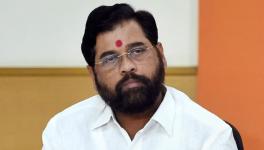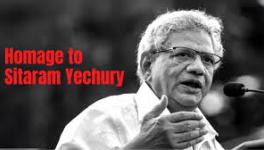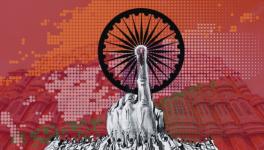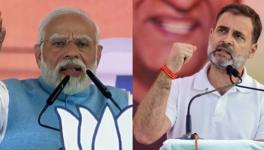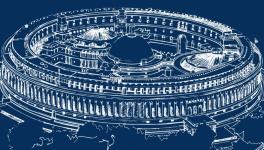‘One Nation, One Election’ Will Test the Limits of Our Democracy
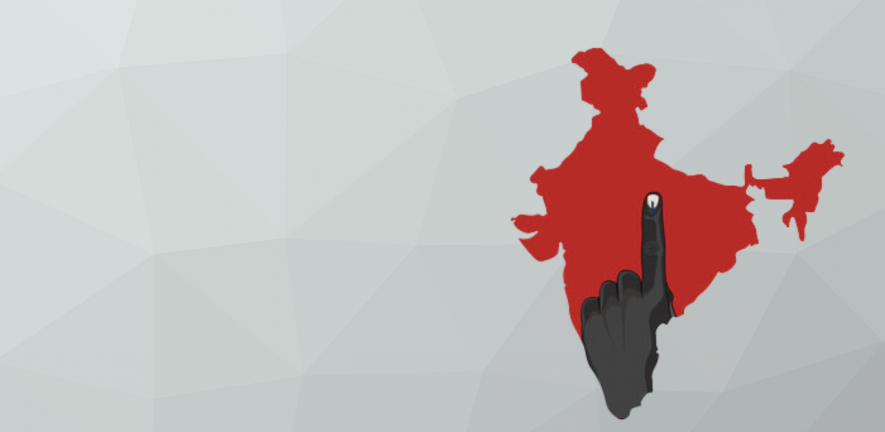
Representational Image.
One nation, one election comes with promises of preventing expenditure and saving resources, but what will happen if Lok Sabha or a state assembly is dissolved midterm?
—
‘One nation, one election’ (ONOE) is often cited as a method of reducing electoral costs.
But a holistic evaluation of any democratic institution or any change in it requires its examination with respect to the impact on other democratic institutions as well as on democracy as a whole.
In brief, consideration ought to be given to whether ONOE would have a favourable impact on our democratic republican polity or otherwise.
Besides, in this instance, the very rationale of ONOE as an effective instrument of reducing costs in the conduct of elections should be scrutinised.
So, how desirable, in totality, is ONOE for our democratic republican polity?
What goals does it seek to achieve?
ONOE is being touted as a way to significantly reduce electoral expenses as separate elections for Lok Sabha and different state assemblies incur repeated expenditure.
According to the Centre for Media Studies, the 2019 Lok Sabha elections cost ₹55,000 crore (US $8 billion approximately), making them the costliest elections in the world. Indeed, the costs need to be brought down and the resources need to be diverted to more productive sectors of the economy.
According to the Centre for Media Studies, the 2019 Lok Sabha elections cost ₹55,000 crore (US $8 billion approximately), making them the costliest elections in the world.
Moreover, ONOE would also reduce the time for which paramilitary forces and administrative machinery remain engaged in election duties.
Another major goal is stability. Recurring elections engage the time and effort of political parties and their leaders in election campaigns for a significantly larger duration than would the proposed simultaneous elections for Lok Sabha and state legislative assemblies. This impacts governance adversely.
Issues
But a major issue with such proposed simultaneous elections is what happens in case of earlier dissolution of Lok Sabha or state assemblies. Will elections be held for the remainder of their term? In such a case, the rationale of cost reduction in the conduct of elections gets eroded.
Another solution could be constructive no-confidence that is followed in countries such as Germany, Hungary and Spain.
In this system, a no-confidence motion is accompanied by a confidence motion, i.e., a no-confidence motion against the real chief executive can be brought in the lower house only if the house proposes a successor who is supported by the majority in the lower house. In Germany, a chancellor can be removed by Bundestag only if members of Bundestag agree on a successor, who is then sworn in as a chancellor, thereby maintaining a continuity in the governance.
Such constructive no-confidence motions trace their origin to the instability in the Weimar Republic as the election threshold in the predominantly proportional representation system was only 30,000 in a district for a party to secure a seat in Reichstag, which gave rise to a fragmented verdict.
On the other hand, the Westminster system is characterised by strong major parties at the national level which is more conducive to government stability.
Hence, the Westminster model is a different system where constructive no-confidence has not been practiced for the purpose of stability, but other systems like anti-defection law were instituted to counter instability, according to the peculiar needs of Westminster system.
But a major issue with such proposed simultaneous elections is what happens in case of earlier dissolution of Lok Sabha or state assemblies.
In India, such an anti-defection provision was instituted as the Tenth Schedule of the Constitution.
Constructive no-confidence procedure is largely incongruous with anti-defection law since in most instances it would require crossing over of members of Parliament and members of legislative assembly of one party to another.
In case small parties or independent members are not available for crossing over, it would require breaking of members from larger parties, who shall invite disqualification on account of the anti-defection law.
Hence, for constructive no-confidence to be adopted, anti-defection provision ought to be repealed by a constitutional amendment.
Indeed, stability may be desirable to ensure proper functioning of a democracy. Recurring instability may lead to failure of democracies as happened as early as 400 B.C. in small city-states of Greece.
On the other hand, stability should not be so prioritised in a democracy that it provides a protective shell to authoritarian tendencies.
ONOE in South Africa, accompanied by a predominant ruling party, which was associated with anti-apartheid movement, resulted in the arbitrary rule of President Jacob Zuma (2009–18).
Zondo Commission, instituted to enquire into irregularities during his tenure, termed the such irregularities due to proximate conduct of Jacob Zuma and the crony businesspersons Gupta brothers as ‘state capture’.
Such are the deleterious consequences of disproportionate provisions for stability in a democratic polity.
Another drawback of constructive no-confidence is that it leads to a minority limping government in case no alternative party or coalition cobbles together a majority even though the instant government stays in minority.
This impacts effective governance, for which majority is desired in the first place. Norway, which has a ONOE system, has frequently experienced brief periods of minority government which has impacted governance therein.
Such a system shall also give rise to rampant horse-trading and corruption, since the continuance of the government, whether of the party or coalition in power or any alternative dispensation, is privileged over seeking fresh mandate.
Cobbling together a majority is not only allowed but is desired for the sake of stability, and there is adequate opportunity and time for the same since the house is not to be dissolved without the proposal of the cabinet in power. This provides a conducive ground for corruption.
Also, constructive no-confidence is more congruous with polities which have a predominantly proportional representation system since, in case of a fresh election, the shift in number of seats for major political parties may not be as prominent as happens in polities that follow first past the post system.
The biggest concern with ONOE is the erosion of the mechanism to hold governments responsible to the citizens on a regular basis.
For example, in Germany a shift of vote by approximately 9 percent from 2013 to 2017 cost Christian Democratic Union only 11 percent of the seats in Bundestag, but a similar shift in a polity that follows the first-past-the-post system would result in drastic change in the number of seats and most probably a change in the government as well.
Since the expected shift is much lesser in a polity following proportional representation system, the probability of change in government through new elections may not be as high as in a system with first-past-the-post system.
Also, since representation of various interests is also pervasively represented due to proportional representation, which can shift allegiance mid-term, the need for mid-term elections is alleviated.
Therefore, stability imposed by constructive no-confidence may not be as oppressive in the former.
But even Germany and several other polities like Spain and Hungary, which follow constructive no-confidence and nearly always witness full-term legislatures, do not enforce any artificial fixed term, least of all adopt ONOE.
Accountability of the government
In a democracy, the desirability of any institution ought to be examined on two basic parameters— whether it leads to increased power in the hands of the people or makes the government more accountable to the people; and whether it leads to increased distribution of power including the classical separation of power, along with strengthening of the mechanism of checks and balances.
The biggest concern with ONOE is the erosion of the mechanism to hold governments responsible to the citizens on a regular basis.
In the absence of democratic institutions such as referendums, initiatives and recalls, regular elections at the Union or state level ensure that political parties are held accountable by the people on a regular basis.
Even a by-election may induce governments to correct its course in a direction desired by the voters.
Thus, in a country like India, elections still remain by far the most effective instrument of ensuring accountability of the government and its myriad agencies.
By allowing a single party or a coalition greater leeway to form governments at both the Union and state levels through ONOE, not only will the accountability of the government be decreased but the polity significantly will also become more amenable to authoritarian forces.
On the other hand, if the total expenses splurged during the elections by different stakeholders is concerned, i.e., ₹55,000 crore during the 2019 Lok Sabha elections, it may indeed be a cause of worry.
In case ONOE is implemented, there will be a credible and persistent threat to democracy.
Effect on federal structure
ONOE is anathema to our federal structure, which is premised on the doctrine that the subjects amenable for local consideration should be dealt with by the constituent states whereas subjects common to the nation, which require consideration at the national level, shall lie within the domain of the federal or Union government.
In case there is ONOE, there is a high chance of the voters muddling up regional and national issues while voting. The chances of the issues at the state level getting neglected are also higher.
A 2015 IDFC study found that if simultaneous elections were held for Lok Sabha and state assemblies, the chance that a political party winning at the Centre will also be voted in the elections for the state assemblies are 77 percent.
This severely undermines local issues and aspirations which originally give rise to and find themselves reflected in the federal structure of our polity.
Thus, ONOE not only reduces accountability of the government, but also leads to erosion of federal structure and concentration of power in the hands of a single party or coalition.
Finally, the most prominent rationale of cost-cutting may not be so effective. According to estimates by the Election Commission of India and the National Institution for Transforming India, the cost of conducting election per se in a five-year cycle is ₹10 per voter which will drop to ₹5 per voter when elections are held simultaneously for Lok Sabha and state assemblies.
Doing this may save ₹5,000 crore.
This cost burden may not be serious enough for as essential a purpose as actualisation of democracy in a large country like India.
On the other hand, if the total expenses splurged during the elections by different stakeholders is concerned, i.e., ₹55,000 crore during the 2019 Lok Sabha elections, it may indeed be a cause of worry.
But, ONOE may not be the most effective or desirable means of reducing these expenses.
For that, transparency in election funding including reforms in the mechanism of electoral bonds or reasonable limit on election expenses may be more viable as well as desirable.
The opaqueness of electoral bonds and reluctance of the government to bring about reforms regarding the bonds shows that reducing the cost of conducting elections is certainly not the motive behind ONOE.
Interestingly, some economic research suggests that election spending may not be so bad since the private expenditure by candidates and parties serves as a stimulus for the economy and boosts government tax revenue.
Yet, it would be desirable to assess the impact of such splurging on electoral outcomes and health of the democracy, and adopt appropriate and adequate measures.
But, ONOE may not be the most effective or desirable means of reducing these expenses.
Reforms in the mechanism of electoral bonds ought to remain on the top of the priority list.
Conclusion
Having examined the desirability of ONOE, it is pertinent to highlight that instituting ONOE shall require a complex combination of constitutional amendment which will not remain restricted only to the duration of Lok Sabha and state assemblies (Article 83 and Article 172 of the Constitution respectively), but which may also impact the Tenth Schedule and other provisions of the Constitution.
Amendments ought to necessarily include addition of specific provisions for the mechanism of government formation, continuation and succession, since the conventions of Westminster model that has guided the elected government in the absence of express provisions in the constitutional law for the purpose shall remain diluted, thus giving rise to a vacuum in constitutional law.
Whether such amendments require ratification by a majority of states will depend on the nature of the mechanism introduced to actualise ONOE.
Even though the government of the day may bring about ONOE through procedurally correct constitutional amendment, it will still need to be examined on the touchstone of basic features, particularly if the mechanism significantly erodes popular sovereignty and the federal structure of our polity.
Mohammad Wasim is an advocate practising in Supreme Court of India and High Court of Delhi.
Get the latest reports & analysis with people's perspective on Protests, movements & deep analytical videos, discussions of the current affairs in your Telegram app. Subscribe to NewsClick's Telegram channel & get Real-Time updates on stories, as they get published on our website.










